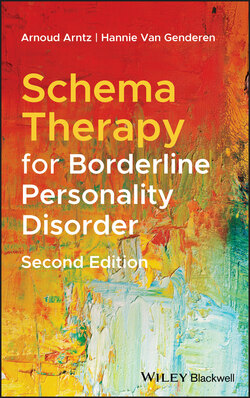Читать книгу Schema Therapy for Borderline Personality Disorder - Hannie van Genderen - Страница 16
(Contra‐) Indications
ОглавлениеThere are certain disorders that can complicate the diagnosis of BPD, in particular bipolar disorder, psychosis (this refers to psychotic disorder, not a short‐term and reactive psychotic episode, which often occurs in BPD patients), and ADHD. The presence of these disorders complicates not only the diagnosis but might also interfere with treating BPD. However, if these disorders are very prominent, they will be the primary diagnosis, and BPD will be usually viewed as a secondary comorbidity. Usually these disorders have to be addressed first, before it is possible to focus on treating BPD.
Specific comorbid disorders, even if they are not viewed as primary, must be addressed before ST can be considered for BPD. These include very severe major depression, severe substance dependency in need of clinical detoxification, and anorexia nervosa. In addition, developmental disorders such as autism spectrum disorders require adaptation of ST. Recently therapists who work with these patients reported that they do have success with treating personality disorders with modified ST in this group when the autistic problems are not too severe. Research on ST for people with the combination of an autism spectrum disorder and a personality disorder has been conducted (Vuijk & Arntz, 2017). It should be stressed that the aim of such applications of ST is not to treat the autism spectrum disorder, but rather the personality disorder problems.
In the study by Giesen‐Bloo et al. (2006), antisocial personality disorder was also excluded. This was insisted upon by the TFP experts. However, pilot studies using ST with antisocial personality disorder have shown positive results, as an RCT comparing ST to treatment as usual in high security forensic hospitals, indicating ST can be an effective treatment for these patients (Bernstein, Arntz, & de Vos, 2007; Bernstein et al., 2020). However, for group application of ST for BPD, the inclusion of patients with specific comorbid antisocial personality traits might constitute a risk, if these patients cannot control their aggressive impulsive and act out in unpredictable ways to other group members. Thus, a history of recent lack of control over interpersonal physical aggression might be a contraindication for group‐ST for BPD. Similarly, specific narcissistic traits, manifested as poorly controlled denigrating others, are a risk for group‐ST.
